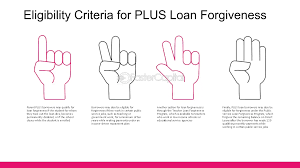Student loan forgiveness is a lifeline that offers financial relief to borrowers who may have accumulated immense educational debt over the years. With student loan debt in the United States reaching almost $1.6 trillion, it’s no wonder that many borrowers are eager to explore their options when it comes to student loan forgiveness programs. This article will help you understand the eligibility criteria and how you can determine if you’re a candidate for student loan forgiveness.
Types of Student Loan Forgiveness Programs
There are several federal student loan forgiveness programs available to qualified borrowers, each with its own set of criteria. Some of the major programs include:
1. Public Service Loan Forgiveness (PSLF) – This program is designed for borrowers who work in qualifying public service jobs, like government or non-profit organizations.
2. Teacher Loan Forgiveness – Aimed at assisting teachers who work in low-income schools or educational service agencies.
3. Income-Driven Repayment (IDR) Forgiveness – Designed for borrowers who make regular, on-time payments under a qualifying income-driven repayment plan for an extended period of time.
4. Disability Discharge – This offers loan forgiveness to borrowers who become totally and permanently disabled, with eligibility determined by specific criteria as per the U.S Department of Education.
5. Closed School Discharge – Provides relief to students whose school has closed before they could complete their program.
Eligibility Criteria for Student Loan Forgiveness
Eligibility for these programs varies by the type of forgiveness being sought. Here’s a general overview of criteria that one needs to fulfill across various programs:
1. Employment: Certain jobs may qualify you for student loan forgiveness, especially positions within federal, state or local government agencies and non-profit organizations.
2. Loan Type: Federal loans like Direct Loans are often eligible, while private loans are typically excluded from most forgiveness programs.
3. Repayment History: Many programs require a history of on-time payments, demonstrating a commitment to repaying the debt. In some cases, a specific number of qualifying payments must be made before you become eligible for forgiveness.
4. Remaining Balance: Forgiveness program eligibility may also depend on the amount of your remaining loan balance and if the loans are in good standing.
Determining Your Eligibility
To assess your eligibility for student loan forgiveness programs:
1. Identify the type of loans you have, and check if they qualify for forgiveness (Direct Loans being the most common).
2. Review your employment status and verify whether your job qualifies for any specific forgiveness program.
3. Assess your repayment history and ensure you have paid all outstanding dues, maintaining a clean payment record.
4. Talk to your loan servicer for clarification on any doubts related to program eligibility and enrollment.
Conclusion
Navigating student loan forgiveness can be overwhelming, but understanding the eligibility criteria is the first step in assessing whether you’re a likely candidate. By reviewing your loans, employment, and repayment history against these criteria, you may join thousands of borrowers who have managed to secure financial relief through student loan forgiveness programs.





